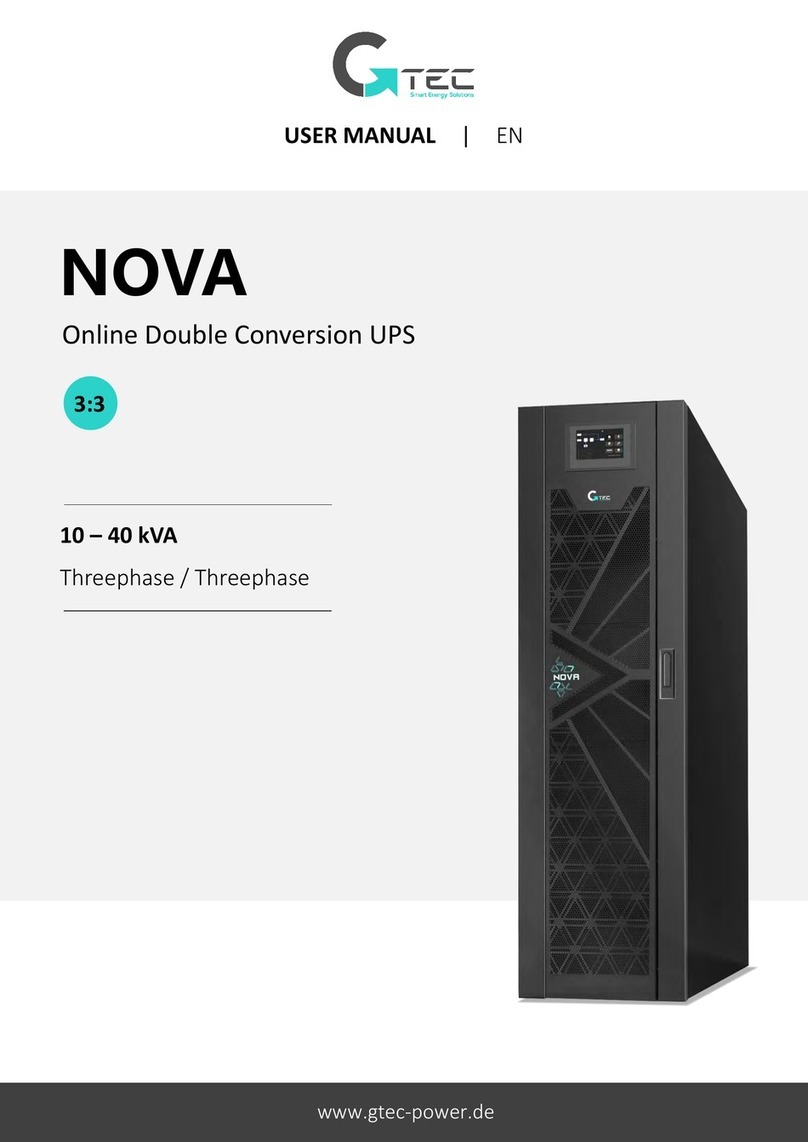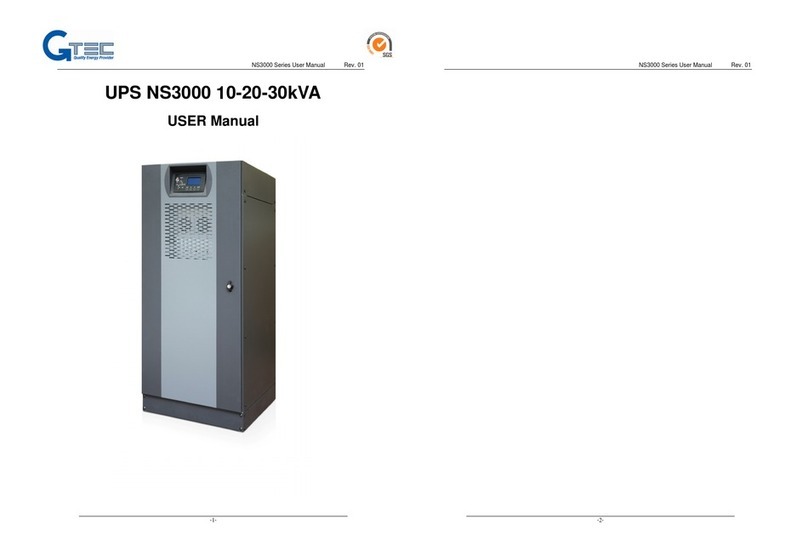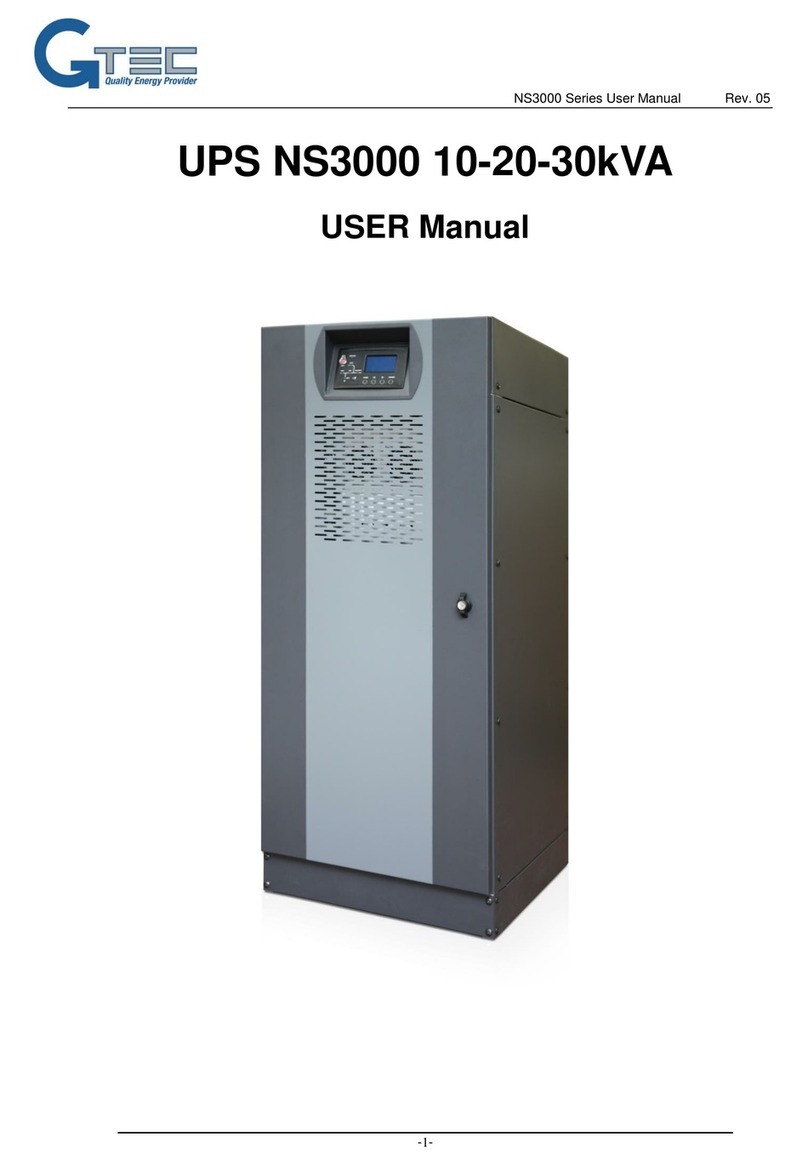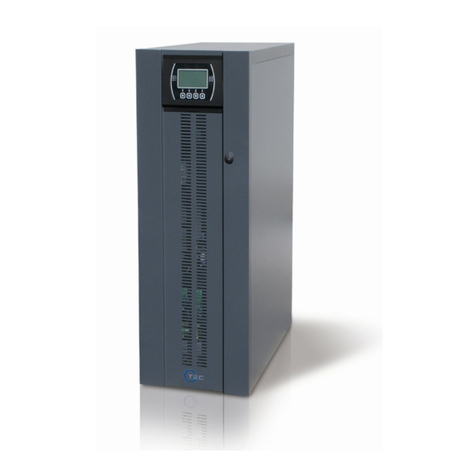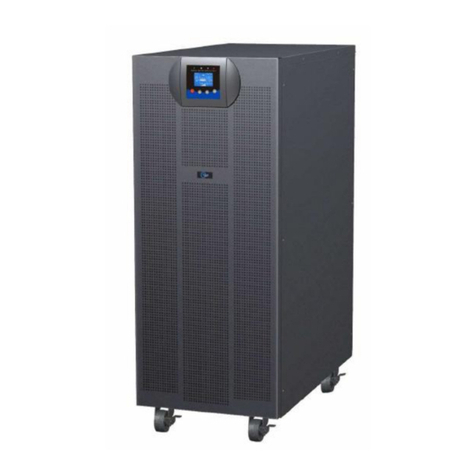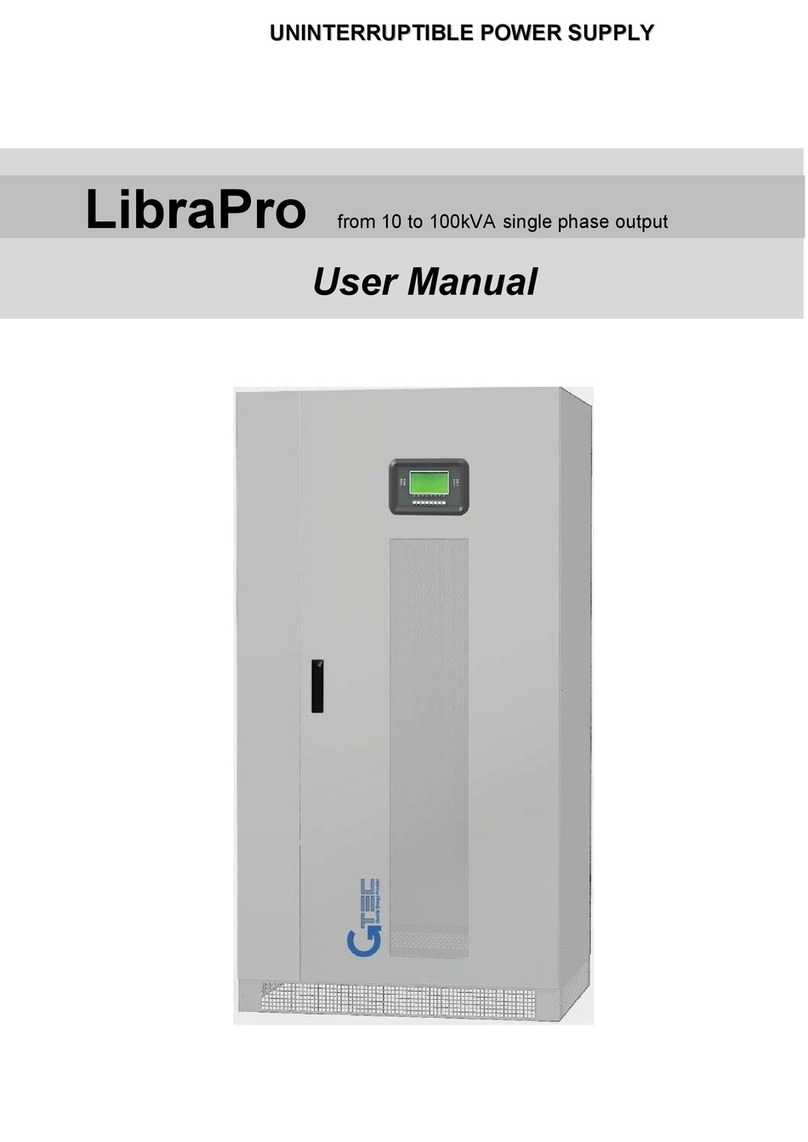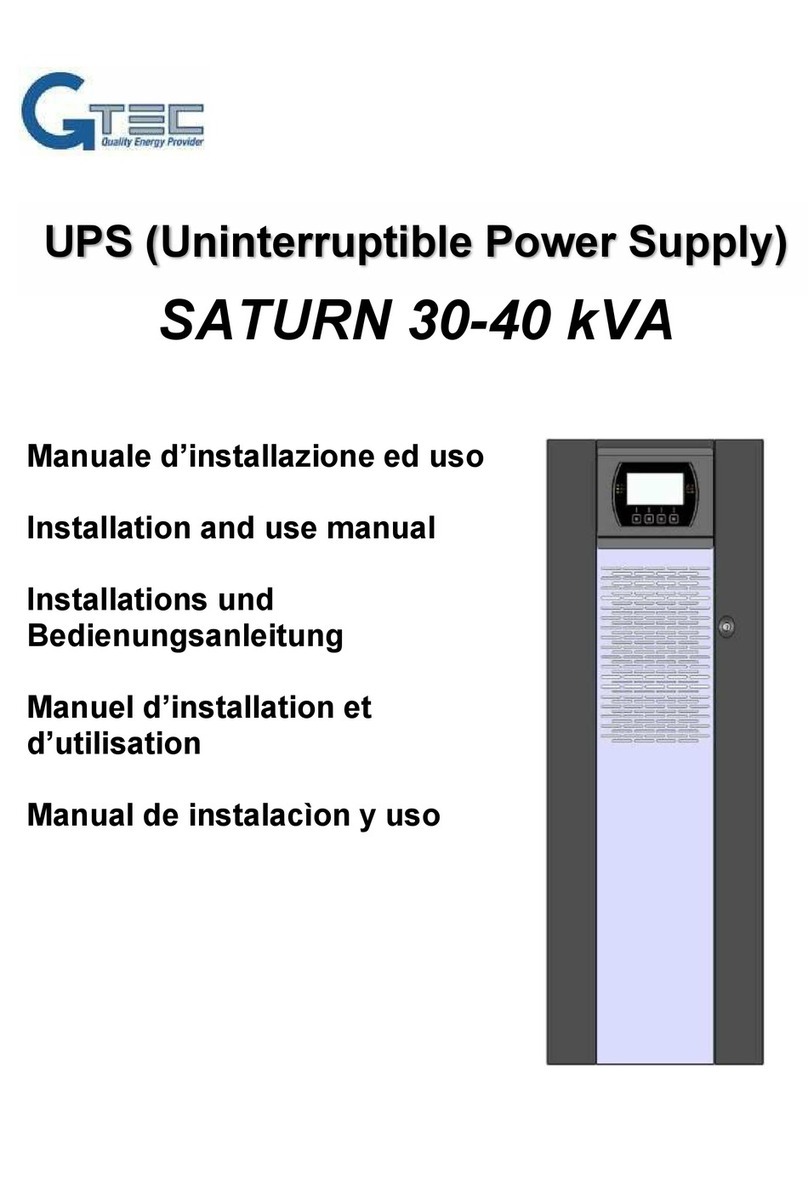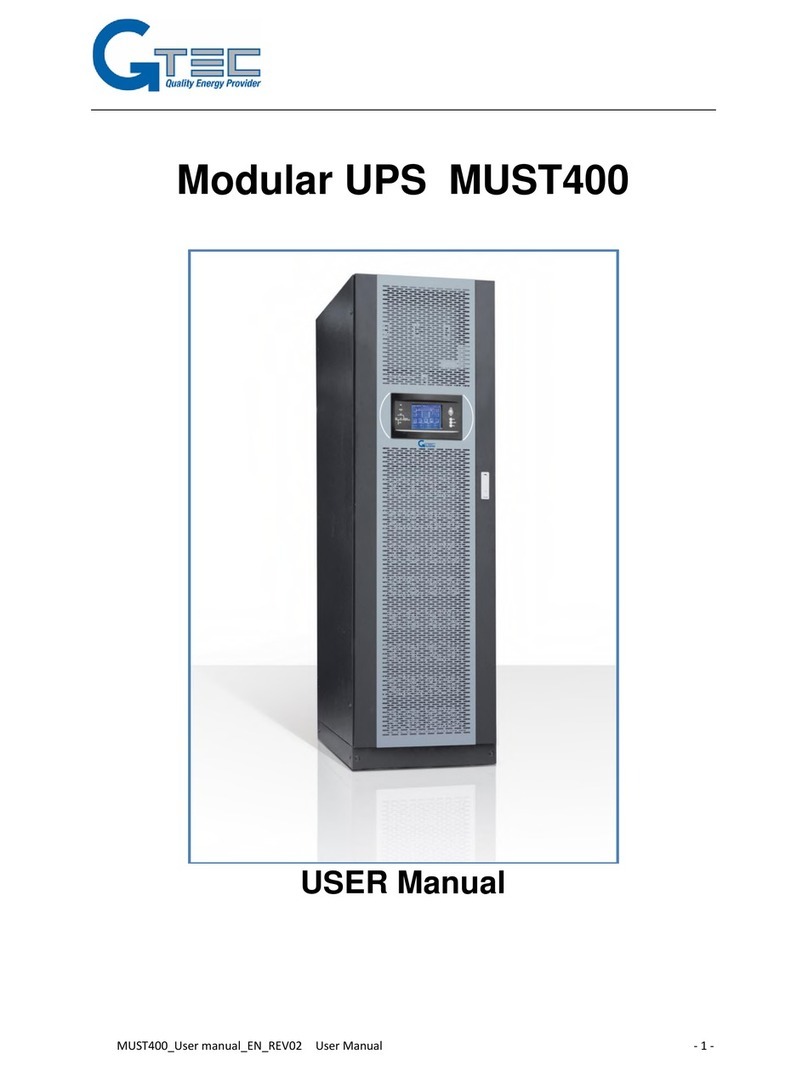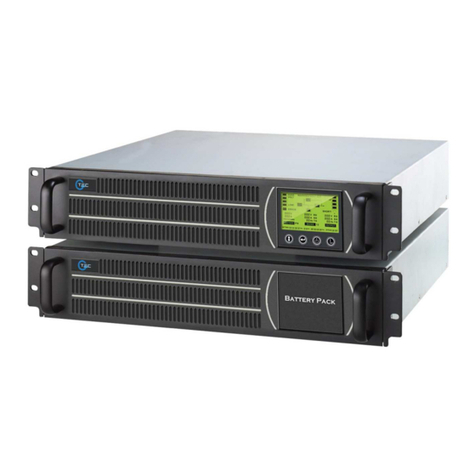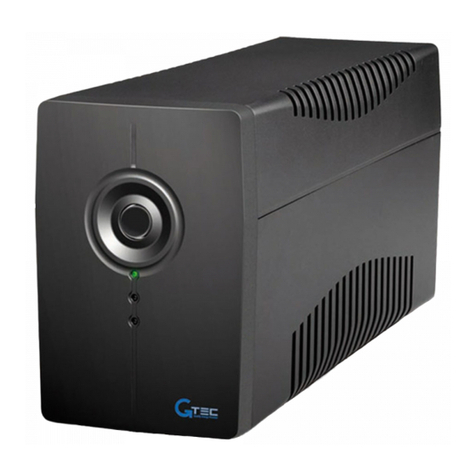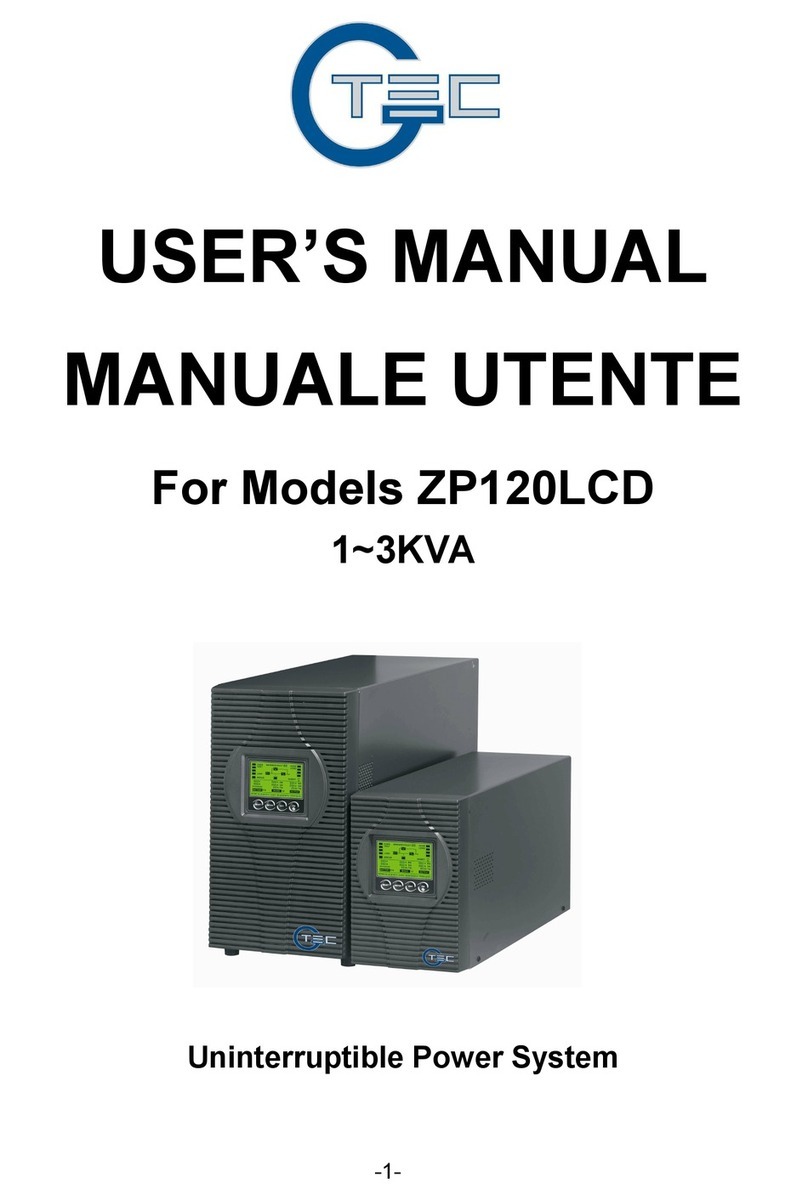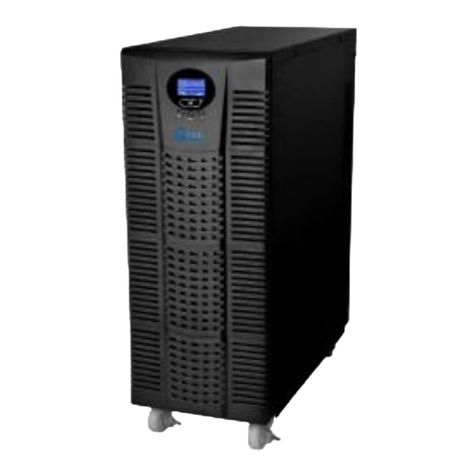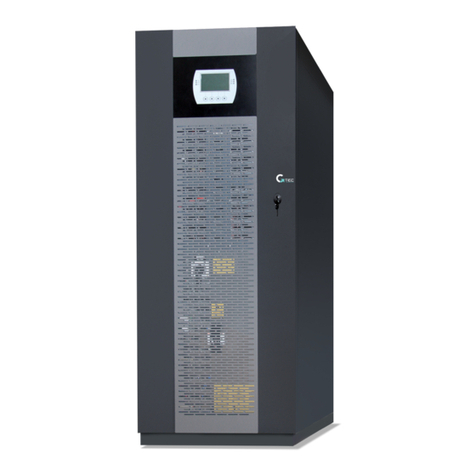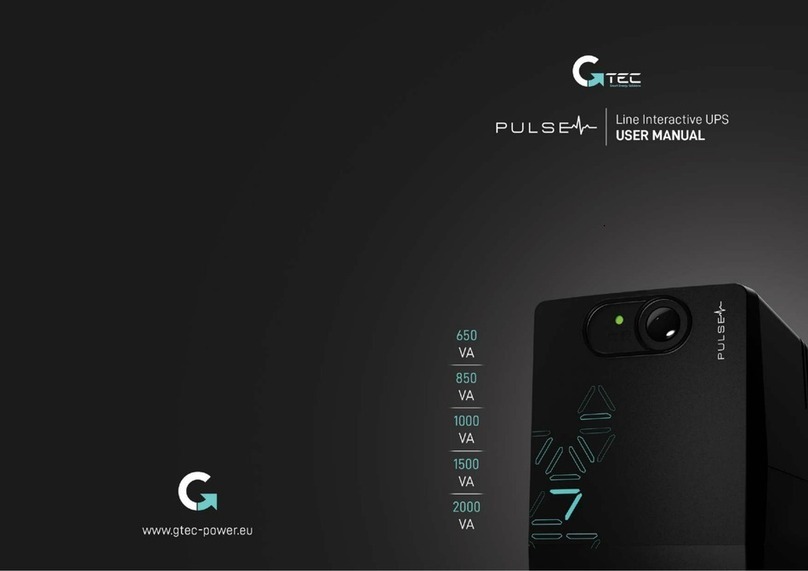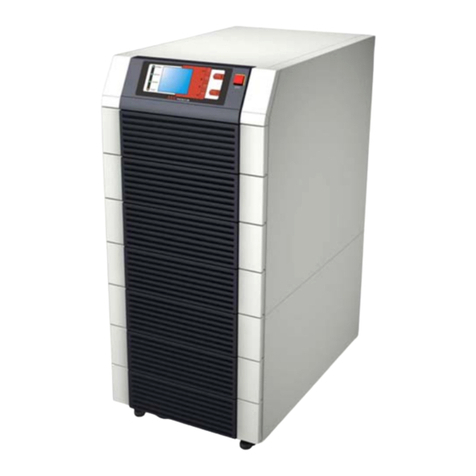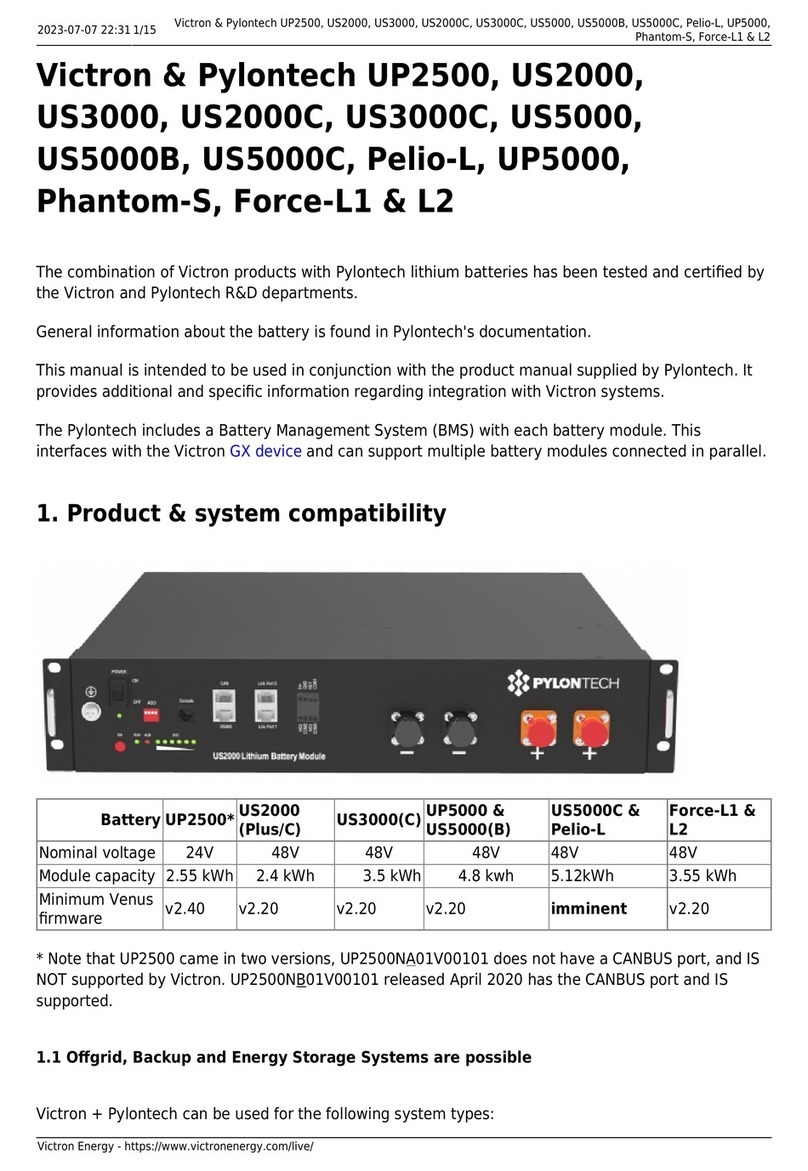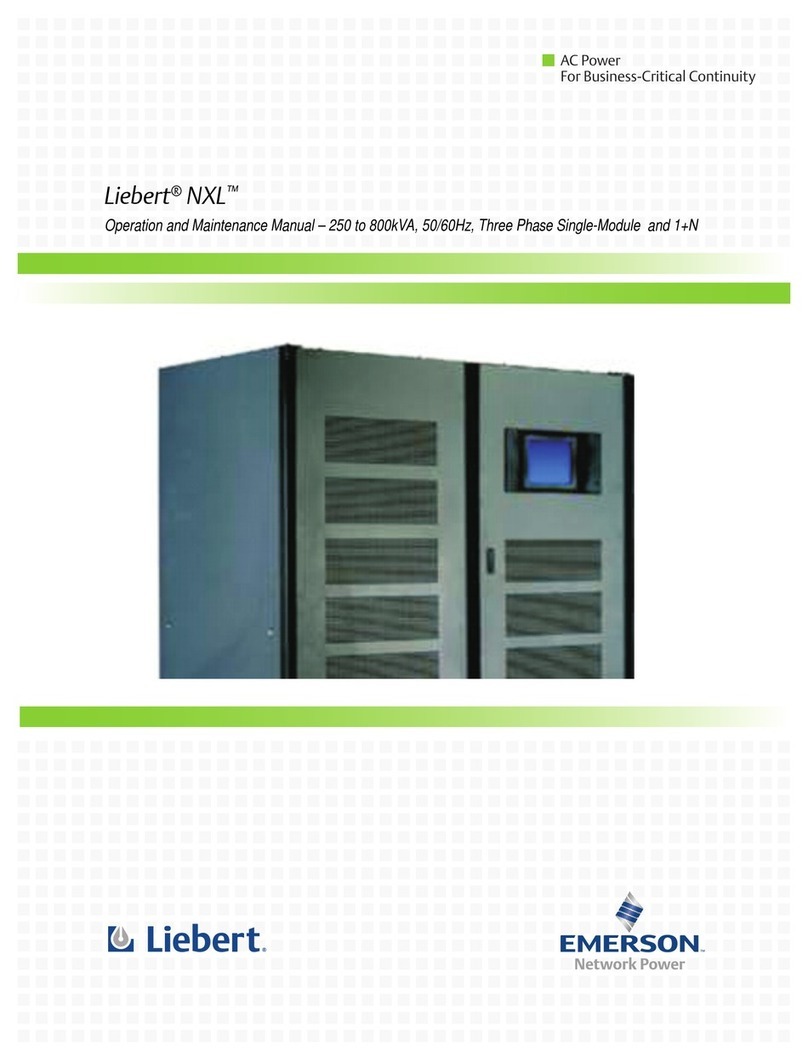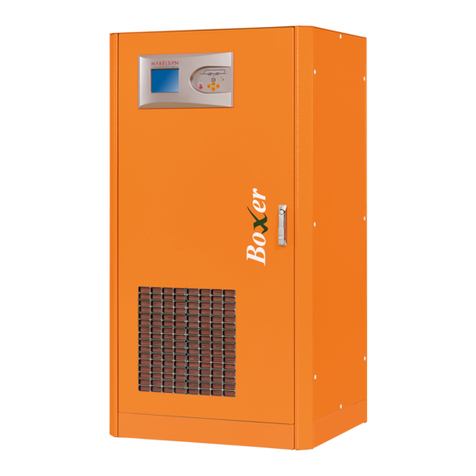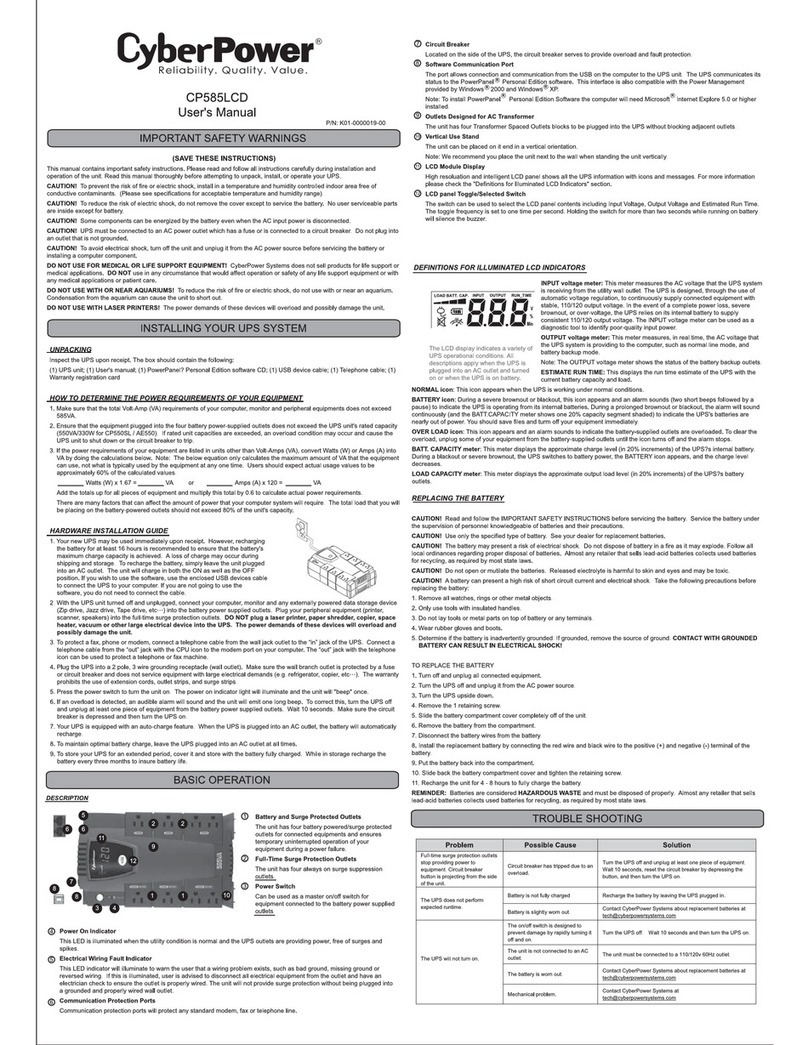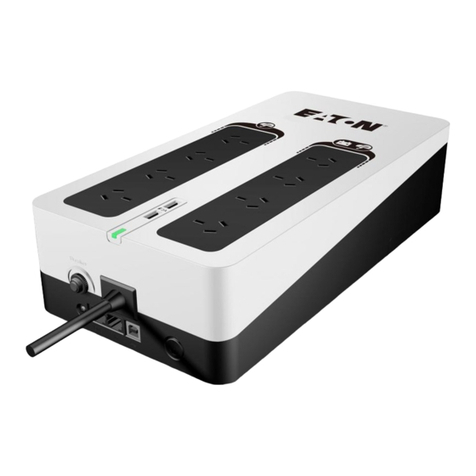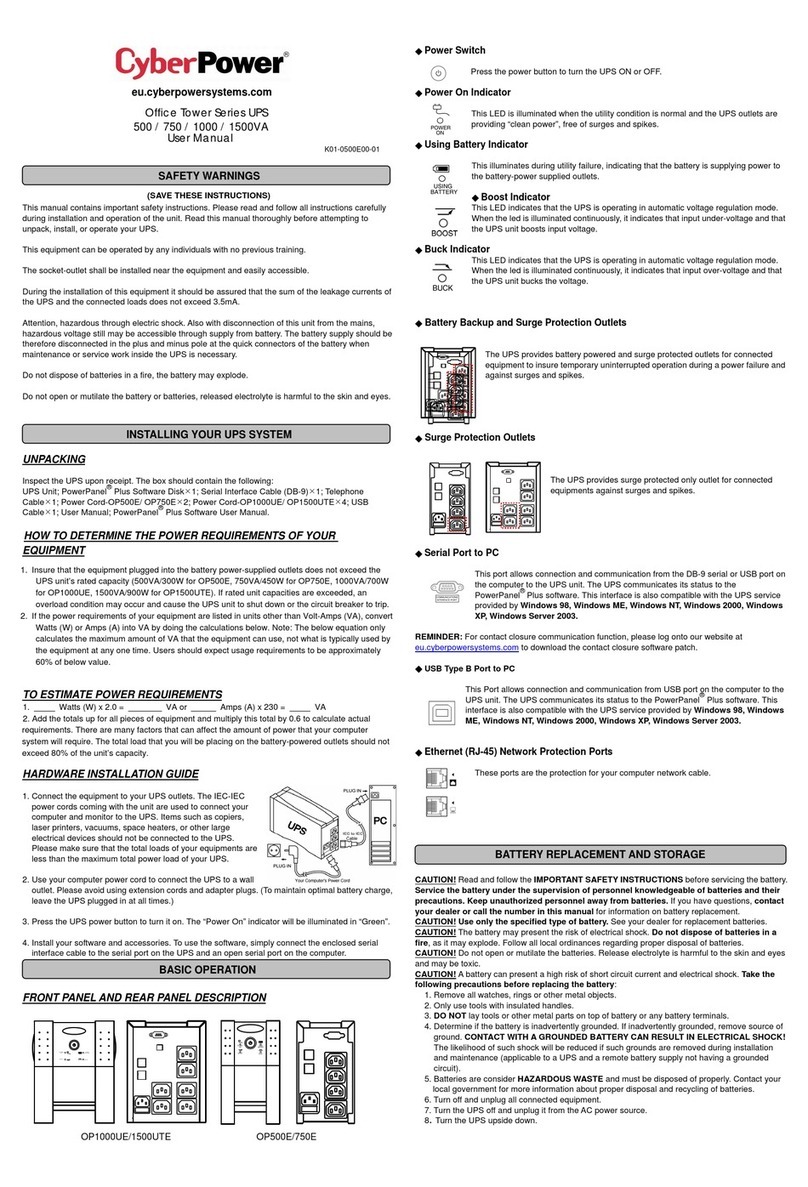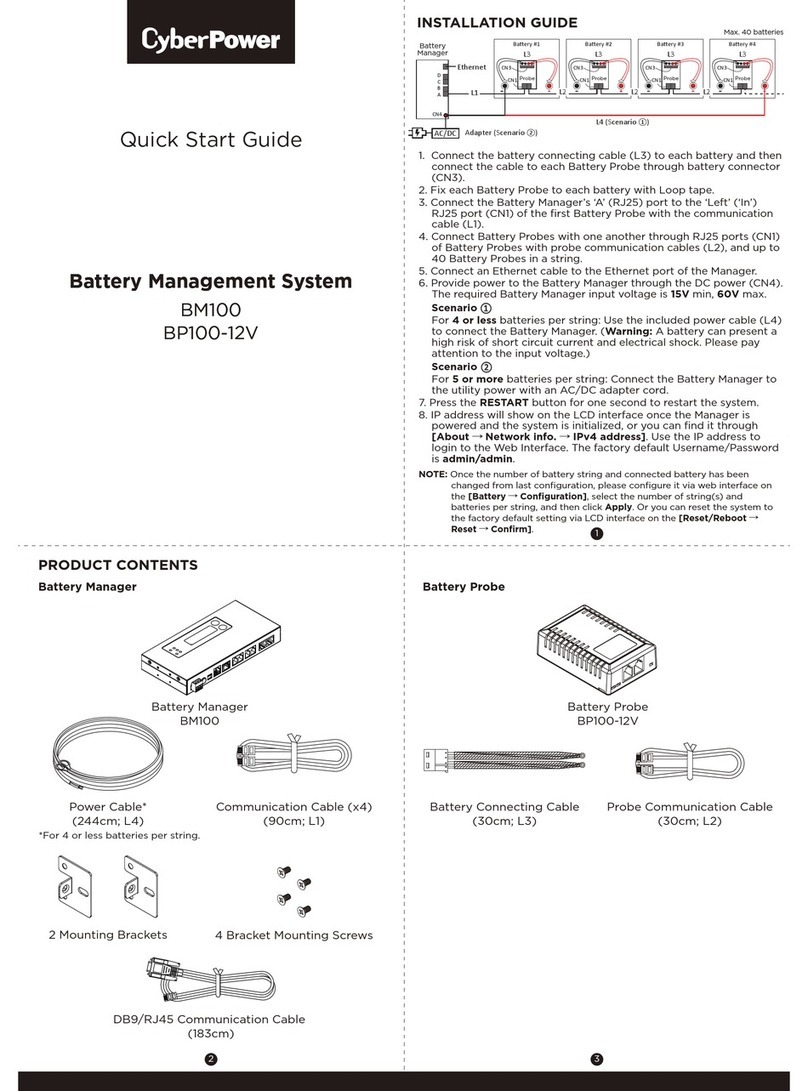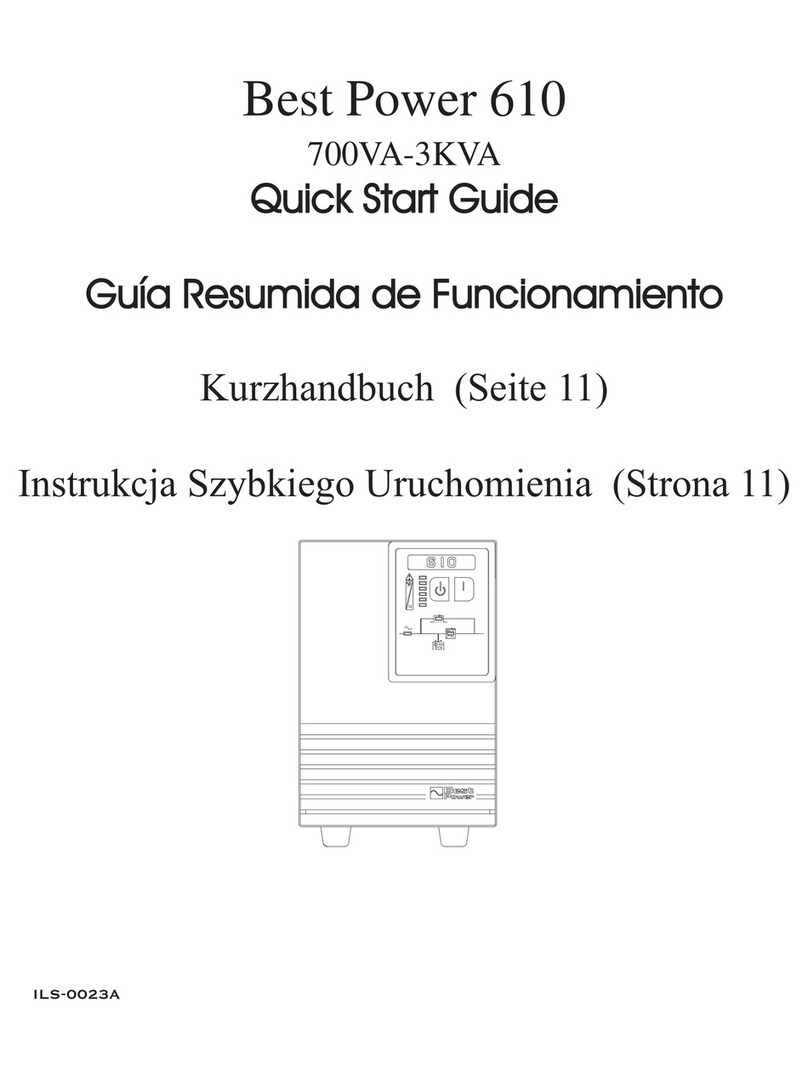5 Operation (LCDmodel)
5.1OperationDisplayPanel
1. ON button:
Pressingthe ON button more than1second (buzzer beeps once), theUPS
systemisturned on.
2. OFF button:
Bypressing this button morethan 1 second(buzzer beeps once) turns off
the UPS system whenever the UPS run under the normalmode/battery
mode.
3. Functionbutton
TheFunction buttonprovides thefollowing functions:
a) Batteryself- diagnosis: Whenthe UPS ranin normal mode, pressingthis
buttonmore than 2 seconds (buzzer beeps twice) can start thebattery
self-diagnosis.
b) Silence function in battery/bypass mode
In battery/bypass mode, when the buzzer beeps, pressing and holdingthe
functionbutton for more than2seconds (buzzer beepstwo times) can
silencethebuzzer. Press the button formore than 2 seconds (buzzer beeps
twice) againto resume the alarm function
16
c)LCD displayscreenswitch
Pressingthe function button for morethan1 seconds and less than 2
seconds (buzzerbeeps once) to switchLCD displayscreen
4LED indicators
TheLED indicators contains, Bypass indicator, utilitypower indicator,
Inverter indicator, Batteryindicator. Thedefinition of each indicator is the
sameasLED panel (refer to table 4-1).
5.2 OperationMode
UPS Operation Modecontains normal mode, batterymodeand bypass
mode. Under the three modes, thepage showing outputvoltage and output
frequencyis the main displaypage. If users need more information about
UPS, Pressingthefunction button can initiatedisplayscreenswitch. Ifthe
current pageis notthe main page, UPS willautomatically switch back the
mainpageafter30seconds. Inorderto extend the LCDusage life, the
backlight will turn off after 1minute withoutany switch operation. At this
point, Users justneed to touch any button brieflyto turn on thebacklight.
5.2.1 Normalmode
Whenoperating in the normalmode, the displayof main pageonthefront
panelis shown as the figure 5-2. The utilitypower indicator andthe
Inverter indicator areturned on. Load informationareashows load value,
and the batterylevel area indicates dynamicallywhenthe batteryis not
fullycharged(the batterylevelicons litone after another circularly). When
the batteryis fully charged, all thelevel iconsareturned on.
1) If the utilitypower indicator blinks, itindicates that there are problems
with reversed polarity(L,N) of site wiringor disconnect with ground.
UPS is still working in normal mode. If the batteryindicator is turned on
at thesame time, itshowsthatthe voltageor frequencyof the utility
power isout of the normal input range of the UPS. The UPS works in
batterymode.
